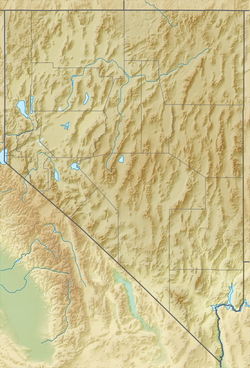| Bodie Mountains | |
|---|---|
| Highest point | |
| Elevation | 2,269 m (7,444 ft) |
| Geography | |
| Country | United States |
| State | Nevada |
| District | Mineral County |
| Range coordinates | 38°17′21.715″N118°52′12.505″W / 38.28936528°N 118.87014028°W |
| Topo map | USGS Mount Hicks |
The Bodie Mountains are a mountain range primarily in western Mineral County, Nevada. [1]
Contents
They extend westward into Mono County, California, where they become the Bodie Hills with the mining district and town of Bodie, California.
The Sierra Nevada tower high to the west.
